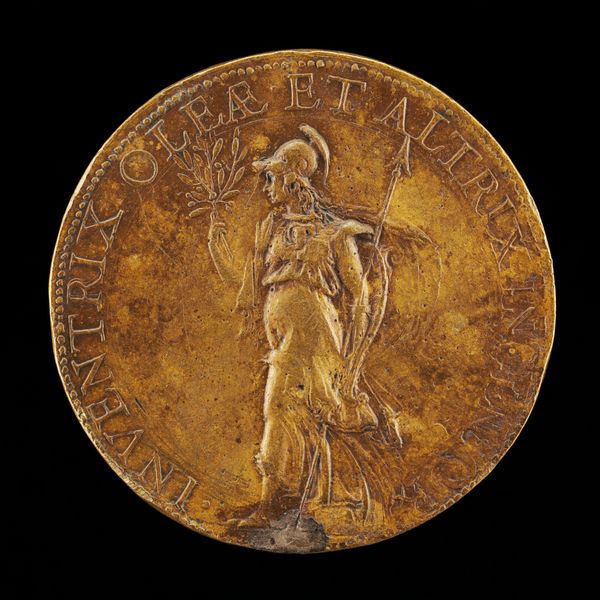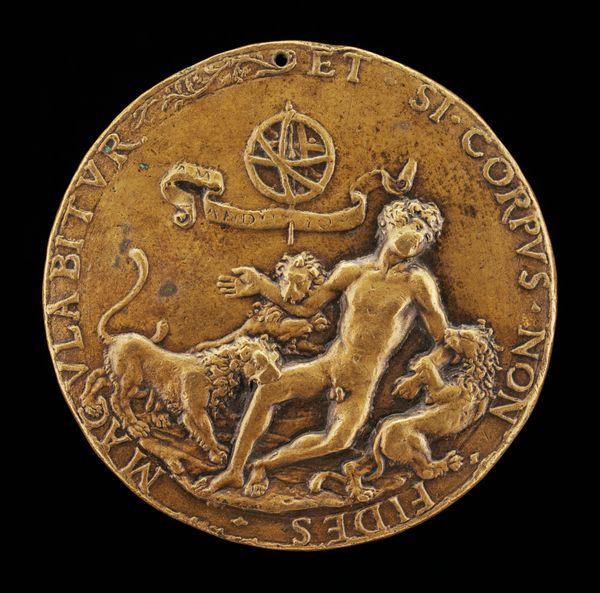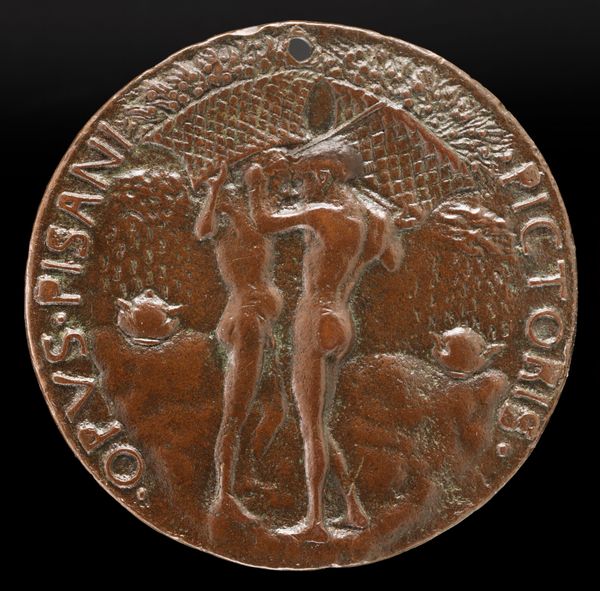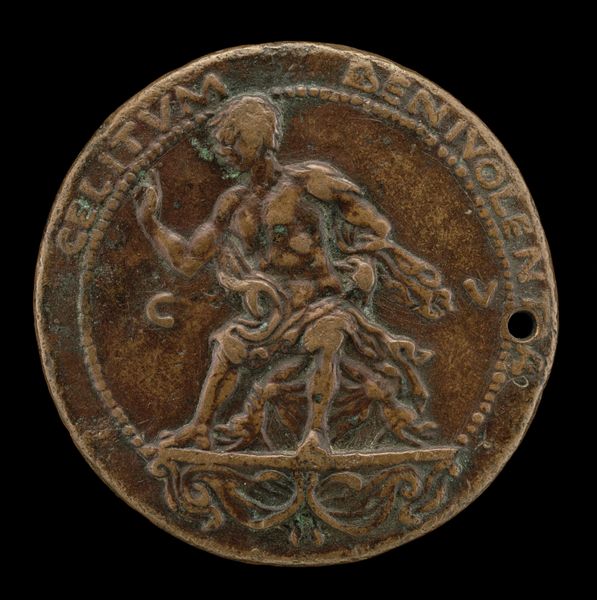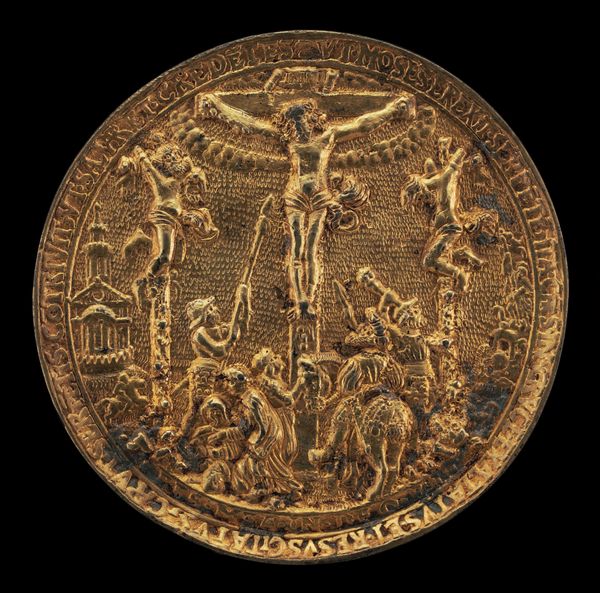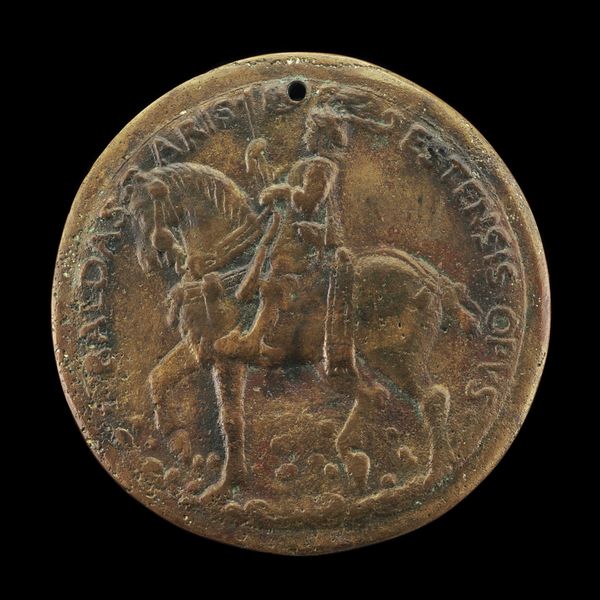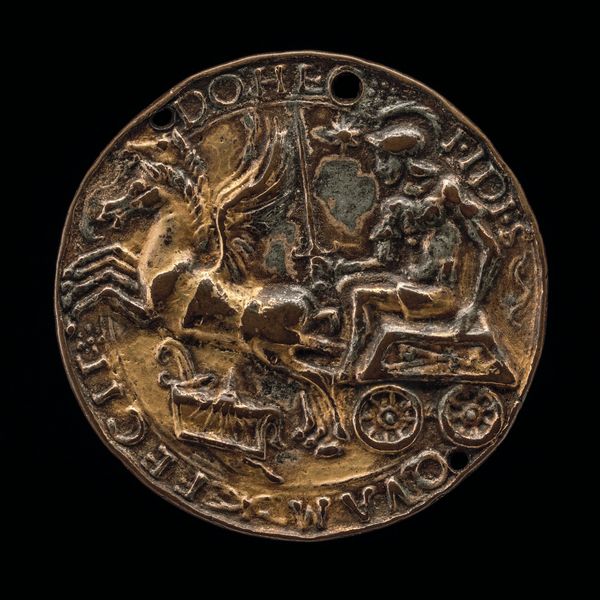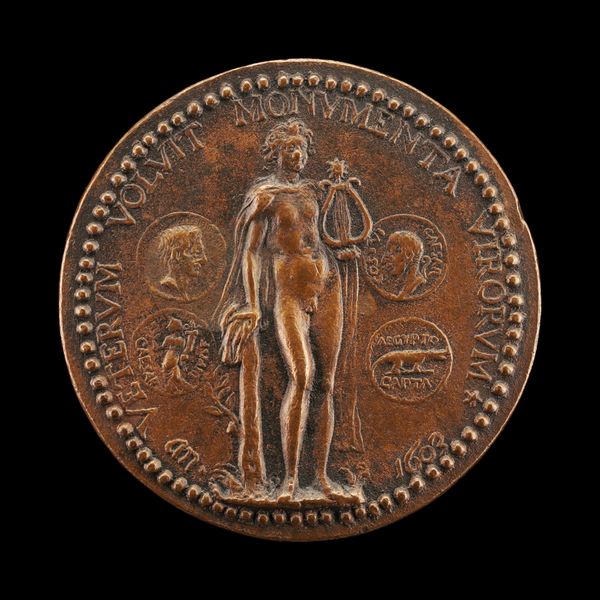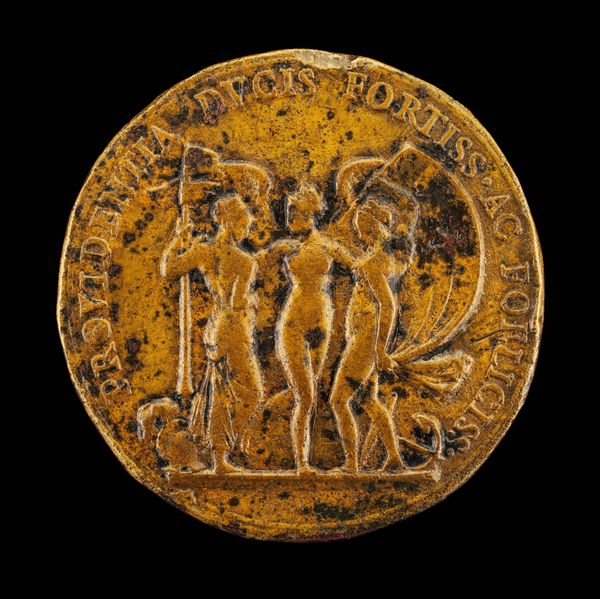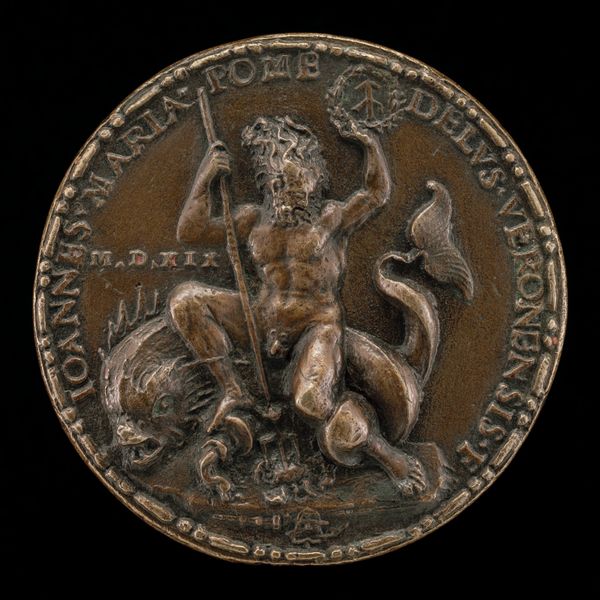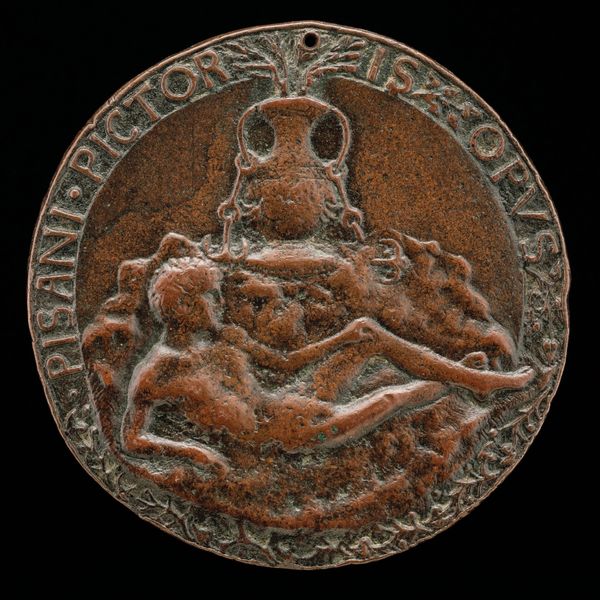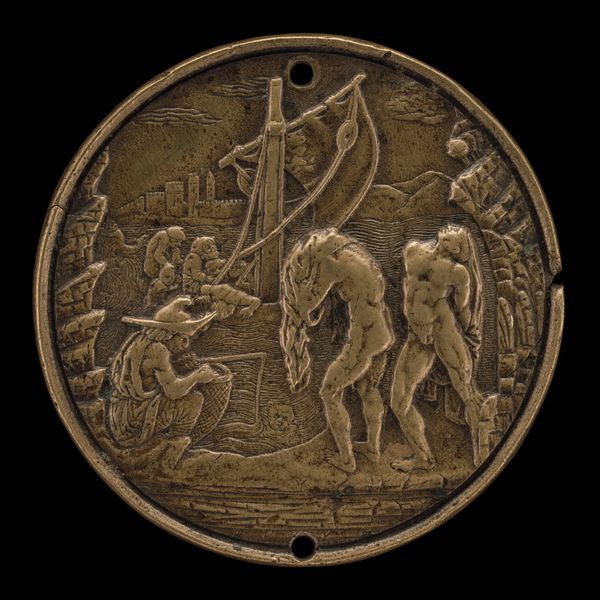![Winged Victory [reverse] by Giancristoforo Romano](/_next/image?url=https%3A%2F%2Fd2w8kbdekdi1gv.cloudfront.net%2FeyJidWNrZXQiOiAiYXJ0ZXJhLWltYWdlcy1idWNrZXQiLCAia2V5IjogImFydHdvcmtzL2UzNTQ0OWVjLWVjYzYtNGEyNC1iODlhLWE5YjI4OTk0ZDIxMC9lMzU0NDllYy1lY2M2LTRhMjQtYjg5YS1hOWIyODk5NGQyMTBfZnVsbC5qcGciLCAiZWRpdHMiOiB7InJlc2l6ZSI6IHsid2lkdGgiOiAxOTIwLCAiaGVpZ2h0IjogMTkyMCwgImZpdCI6ICJpbnNpZGUifX19&w=3840&q=75)
relief, bronze, sculpture
#
medal
#
stone
#
sculpture
#
relief
#
bronze
#
sculptural image
#
figuration
#
sculpting
#
ancient-mediterranean
#
sculpture
#
carved
#
history-painting
#
italian-renaissance
#
statue
Dimensions: overall (diameter): 3.93 cm (1 9/16 in.) gross weight: 25.77 gr (0.057 lb.) axis: 12:00
Copyright: National Gallery of Art: CC0 1.0
Curator: I'm immediately struck by the contrasting textures. The smoothness of the medal's surface is punctuated by the crisp, high relief of the figures. Editor: Today, we are looking at “Winged Victory [reverse],” a bronze relief created in 1498 by Giancristoforo Romano. This sculptural medal blends classical imagery with Renaissance aesthetics. Curator: Yes, notice the central figure: Winged Victory, naturally, poised with a spear, a coiled snake at her feet. The composition is ingenious. Romano uses the circular format to amplify the dynamism. The texture, the depth—it gives it a tactile presence that belies its small scale. Editor: And above Victory, you see a centaur figure? It draws upon classical mythology. This medal would have circulated among elite circles, signaling the patron’s humanistic learning and their connection to classical virtues. Think about the Renaissance obsession with reviving ancient forms and ideals—medals like this were crucial in that project. They functioned as portable monuments, symbols of power and erudition. Curator: Indeed. Note how the sculptor plays with light and shadow. The raised surfaces catch the light, defining form and volume, whereas the incised details create a sense of depth, activating the surface. The placement of text encircling the medal, "BENVENERE NTIUM ERGO", seems very intentional, contributing to the rhythm. Editor: Right, the inscription and imagery would have been carefully considered to promote a specific message about the patron. That visual language reinforces the power of these objects within the social fabric of the time. What stories could this artwork tell us? The study of these is interesting because through these stories, you find that even objects like this hold secrets about those who commissioned them, their ambitions, and their place in history. Curator: Absolutely, its compact form is powerful! Editor: I concur; powerful indeed, even today!
Comments
No comments
Be the first to comment and join the conversation on the ultimate creative platform.
